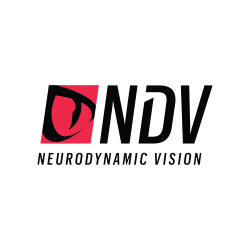What is Neurodynamic Vision Training?
Reference article: The NeuroTracker Team, May 17, 2019
Across pro sports, neurodynamic vision training is being recognized as an untapped source of potential competitive advantage. The neurodynamic vision approach is a holistic way to combine physical athletic training with visual performance skills such as focus, accuracy, multitasking and visual endurance. As such, specialists from a variety of fields are sprouting up dedicated performance centers all over North America and Europe.
Neurodynamic Vision Concepts
In the same way that an athlete improves sports performance by training the body for strength and endurance, visual skills can be improved and enhanced through a wide range of conditioning techniques. These are some examples of specific visual functions that vision specialists typically train.
Peripheral Awareness – allows perception of what’s going on at either side of you without turning your head
Dynamic Visual Acuity – enables sustained and clear focus on objects when they are moving quickly
Depth Perception – provides spatial judgments, such as how far away an object or person is
Eye-hand Coordination – involves the coordinated processing of visual input and motor-skills involved in hand movement
Color Vision – the ability to detect different colors and hues to interpret subtle features in the environment
Contrast Sensitivity – the ability to distinguish between fine increments of light versus dark
Performance training of these skillsets is not a ‘one size fits all’ approach, as the vision skills for optimum athletic performance will vary, depending on the demands of each sport. For example, tennis players need excellent hand-eye coordination, teams sports place large demands on peripheral awareness, and contrast sensitivity is key for skiers, who must perceive their path via snow shadows. Rather than the traditional approach of simply testing, corrective and training eye functions, the neurodynamic vision approach tries to bring the whole perception to action loop together.
Taking it to the Field
To use baseball as an example, here are some of the ways neurodynamic vision training could help players on the field.
Pitch Recognition – Batters have about 250 milliseconds to identify the type of pitch being thrown, predict its path into the strike zone and direct the bat to that location. The more efficient batters are in processing this rapid stream of visual information, the more quality at- bats they will have. Multiple object tracking and perceptual-cognitive training could increase baseball players’ ability to identify key visual cues in the pitcher’s wind up and release. This could permit them to accurately predict where and when the pitch will cross the plate and determine whether to swing or not.
Effective Playmaking – Once the ball is in play runners and fielders have to rapidly assess the situation, anticipate what’s next, evaluate their options and execute, often in a split second. When the game is tight the pressure on these athletes can be enormous. Multiple object tracking and perceptual-cognitive training could enhance athletic performance by improving cognitive function, which in turn is a crucial element in making rapid decisions under pressure.
Mental Endurance – Baseball interposes long periods of inactivity with brief episodes of intense action. But the periods of inactivity are only physical. Mentally, the players on the field and at the plate must remain cognitively sharp and in the moment. Multiple object tracking and perceptual-cognitive training could increase cognitive stamina, much like strength and conditioning training increases physical stamina. Multiple object tracking and perceptual-cognitive training could also help improve attention and focus, so players can maintain situational awareness and retain their competitive edge throughout the entire game.
Want to learn more about neurodynamic vision? Then check out some related blogs here.




Comments